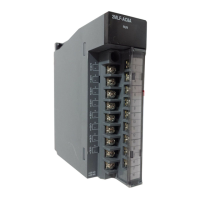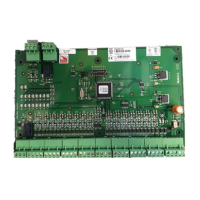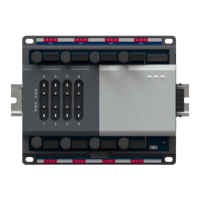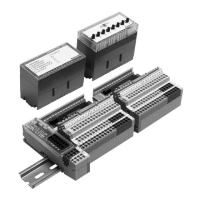Installation and Operations Guide
|
VLX/ACM-VLX data, DDC, and automation
© Honeywell. All Rights Reserved. LT-VLXEXPAXMIOG Rev. 01
59
If a corresponding physical input or output does not exist and an object property
is referenced, the VLX/ACM-VLX returns an UNRELIABLE_OTHER for the
reliability property and FAULT for the status-flags property.
Inputs (AIs and BIs)
For universal inputs, an AI and BI pair is associated with the physical input
terminal. A set of configuration values is also reserved for AI setup (see “Setting
up inputs” on page 53). The type of object appropriate for the equipment
connected to it determines whether an AI or BI should be used.
EXP Release 1: Inputs use a 12-bit analog-to-digital (A/D) converter and a 5.12
VDC onboard reference voltage The A/D converts the electrical input signal to
counts. Count refers to the number in software that results from the A/D
conversion.
EXP Release 2: Inputs use a 12-bit analog-to-digital (A/D) converter and a 5
VDC onboard reference voltage The A/D converts the electrical input signal to
counts. Count refers to the number in software that results from the A/D
conversion.
AXM: Inputs use a 12-bit analog-to-digital (A/D) converter and a 5 VDC
onboard reference voltage The A/D converts the electrical input signal to counts.
Count refers to the number in software that results from the A/D conversion.
As the input electrical signal goes from the low end of its range to the high end,
counts go from 0–4095. An infinitely great resistance (an open) results in a count
of 4095. An infinitely small resistance (a short) results in a count of 0. A
4-20mA signal will range in actual counts from 800–4000, while a 0-5VDC
input will range from 0–4000.
EXPs/AXMs read inputs and make data available to the VLX on change-of-
state. EXPs/AXMs process inputs every 0.1 second. Change of state is
considered to have occurred when the raw count value changes by 2.
Most analog inputs are scaled or otherwise treated in software or DDC to
provide a range appropriate and intelligible for the application. See “Appendix
B: Scaling factors” on page 75.
For each BI, built-in trigger and restore values associated with the AI determine
when the BI transitions ON and OFF:
• BI = ON when raw counts
448.
• BI = OFF when raw counts 512.
• BI is unchanged when raw counts are in the range 449–511.
For inputs set up as pulse-type inputs, AI-e0nn provides rate and AV-e019+nn
provides consumption (for example, AV-e021 provides consumption for IN-2).
Outputs (AOs and BOs)
Output objects are associated with corresponding output terminals on the EXP/
AXM. AOs are for analog loads. BOs are for binary loads.

